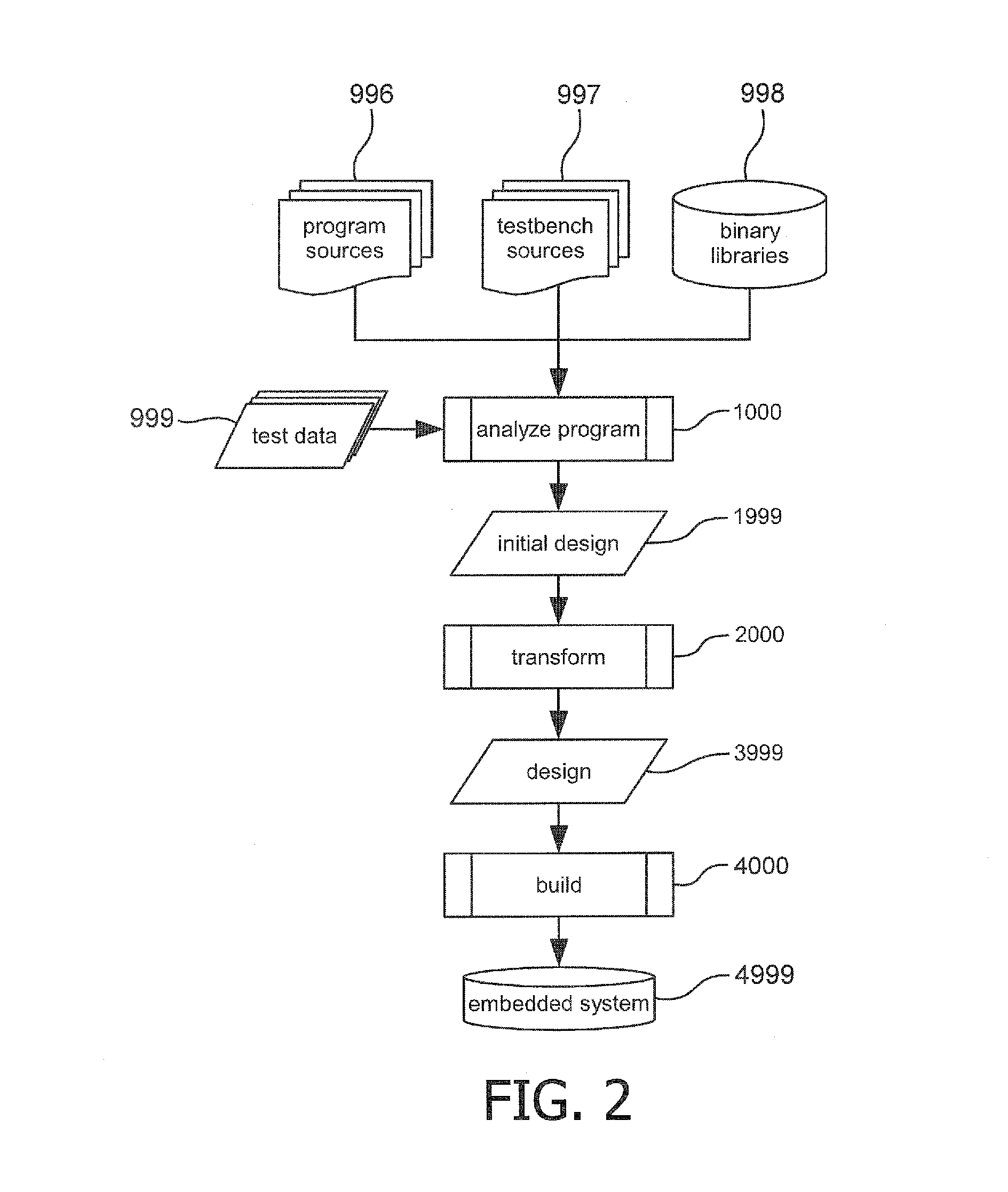Embedded system performance
a technology of embedded systems and embedded systems, applied in the field of embedded system performance, can solve the problems of time-consuming, complex, and rapid use of embedded systems, and achieve the effects of reducing costs or circuit board space, faster operating or response time, and better choi
- Summary
- Abstract
- Description
- Claims
- Application Information
AI Technical Summary
Benefits of technology
Problems solved by technology
Method used
Image
Examples
first embodiment
[0084]The transform process partitions a seed design 1999 by separating functionality from the original program 996 and assigning these to parallel tasks, i.e. tasks to be performed on separate processors. In the transform process, user input is used to realize the partitioning. In this embodiment a graphical user interface displays 2200 the program structure with associated dependencies giving the user the required insight in the application behavior needed to select 2300 a bottleneck function or loop invocation. In such embodiments step 2400 then implements displaying a number of partitioning options 2410, allowing the user to select a preferred partitioning option 2500 for further partitioning of other function or loop invocations. Each preferred partitioning option results in an updated and re-estimated design 2110 that can be used as the design 3999 or, if multiple design alternatives are generated, stored as one design alternative.
[0085]In such embodiments partitioning happens...
second embodiment
[0100]In the transform process, partitioning is performed in a more automated way. A preferred embodiment operates as follows. The user points to an invocation that he deems critical for an efficient implementation. An algorithm then elaborates a promising set of legal partitions for this invocation. To keep things computationally tractable, the algorithm only explores a reasonable subset of all possibilities, for example by limiting itself to inspecting only the invocation and its immediate sub-invocations for partitioning options, or by limiting the amount of compute time it spends on the search, or through a combination of these two. When considering a candidate partition, the algorithm rejects any candidate partition that violates the two rules outlined above.
[0101]One may also completely eliminate the involvement of a human operator but that would introduce a risk that a suboptimal partitioning is chosen. The choice of partitioning option can be made in an automated fashion by ...
PUM
 Login to View More
Login to View More Abstract
Description
Claims
Application Information
 Login to View More
Login to View More - R&D
- Intellectual Property
- Life Sciences
- Materials
- Tech Scout
- Unparalleled Data Quality
- Higher Quality Content
- 60% Fewer Hallucinations
Browse by: Latest US Patents, China's latest patents, Technical Efficacy Thesaurus, Application Domain, Technology Topic, Popular Technical Reports.
© 2025 PatSnap. All rights reserved.Legal|Privacy policy|Modern Slavery Act Transparency Statement|Sitemap|About US| Contact US: help@patsnap.com



